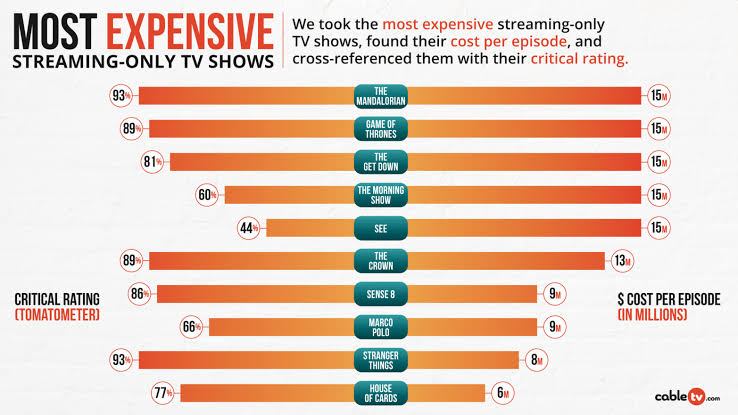When deciding between video services, you’re likely to choose between cable television and numerous streaming alternatives. We’ll dissect the distinctions between them to assist you in determining the best kind of entertainment for you and your family.
While both cable television and video streaming services (Like Disneyplus.com Begin) achieve the same goal (displaying enjoyable content on your screen), the methods by which they accomplish this are markedly different. Cable providers distribute video content over their dedicated networks and have a long history of working with content providers. This system underpins the pay-television business, and the product you receive reflects this. Cable television is typically more reliable and offers a greater variety of programming but at a (literal) higher price.
On the other hand, streaming companies are newbies to the video business and are not governed by the same restrictions. They may provide their services across the country, and you can access them via several devices. They are not constrained by old infrastructure, which is both a benefit and a disadvantage. They can deliver through any Internet connection, but they are entirely reliant on the quality of that connection and have no control over it. They often offer more affordable subscriptions with fewer channels.
Content Selection
Cable still holds the edge when it comes to content availability over the majority of streaming alternatives. Their channel lineup often numbers in the hundreds and will include the plurality (if not all) of the ‘variant’ channels for networks such as sports. However, this is also why cable is so expensive. Their ability to deliver you material is contingent upon package agreements with large content networks, and while they may be cheaper per channel, you do not have the option of channel selection.
On the other side, streaming providers offer a smaller number of channels overall. However, they will almost certainly have all of the major channels that most viewers would require. For instance, all the Big Four networks and prominent cable channels will be represented. Unless you consume a large number of channels or have something unique on your must-have list, the majority of streaming services will contain what you’re looking for.
Service Availability
With Streaming, You Have More Options; With Cable, You Have Fewer.
If you’re contemplating cable service, you probably won’t need to conduct extensive business research. The cable industry’s initial structure was monopolistic. Each cable company was granted an exclusive license to provide service in exchange for developing the network in a particular geographic area. Since then, changes in the industry have enabled specific competitors to compete (RCN Cable is an example). However, the likelihood is that the number of these rivals is modest.
In comparison, streaming service providers operate on a national scale. Your access to, for instance, Hulu or Sling will not be restricted by your location, as long as you can obtain enough Internet connectivity. However, the number of devices that may stream from a specific service may be limited.
Reliability
The term “streaming video services” refers to just what they are. You submit a request, and the supplier immediately provides you with the video material over your Internet connection. This has a variety of benefits. Portability, or the ability to view the service on any compatible Internet device (including desktops, iOS/Android tablets or phones, and gaming consoles), is one of them.
Another advantage is mobility, which allows you to watch from any place with an Internet connection. This also allows for easy pausing and rewinding of programs, even while it is being broadcast live. Additionally, this implies that your experience is entirely dependent on the quality of your Internet connection.
Cable is a broadcast medium, much as local television networks transmit footage over the airways. Cable now transmits data via copper wire rather than signals and has already transitioned from analog to digital. However, the fundamental concept remains the same. As a result, the entirety of the information is practically live.
Now, if you get up for a snack and miss something, most new cable boxes can emulate pause/rewind functionality by automatically recording your current program. However, the amount depends on the carrier, and this value is reset when the channel is changed. To that end, you’ll need a set-top box from your provider to access their service.
Plans and Pricing
As implied by the preceding sections, the bottom conclusion is that cable is more expensive than streaming. Your payment will be higher with a cable line unless you choose the lowest basic plan available (for example, the author’s local cable provider provides a bundle that includes Internet for $42.49/mo).
To some measure, you get what you pay for in terms of additional channels. However, this figure may increase or decrease depending on the DVR box you choose and whether you combine it with other services such as the Internet or phone. Bear in mind, however, that your price will often increase after the first year when your contract and special rates expire.
However, you might anticipate a much looser arrangement with streaming providers. Typically, plans are month-to-month affairs that may be canceled online and will expire automatically before your next payment date. Additionally, as previously said, streaming providers often do not provide tiers as pricey as those offered by cable companies. Ensure that all of your virtual channels are available for streaming.
Final Thoughts
There are a few factors to consider before making this choice. Both are technologically comparable. For instance, while streaming providers are likely more adaptable in device compatibility, many cable providers also provide dedicated video-watching applications. Cable boxes also perform a number of the services that streamers are accustomed to, such as DVR capabilities and the ability to pause/rewind live TV, but slightly different ways.
However, you have nothing to lose by giving streaming a try first by subscribing or testing Disney plus, Netflix, or WatchCartoonOnline for the latest TV shows, movies, animated movies, or cartoons. There is no additional equipment to purchase, and if you are dissatisfied with the service, you may cancel it after the 30-day trial period (or try a different provider).
There are two instances in which you should do a thorough examination of cable. The first is if your area’s Internet connection is substandard, which means that your streaming will always be choppy and buffering. The second is if there will be a massive number of individuals viewing different things concurrently in your household. Even if your streaming providers do not impose any restrictions, the amount of Internet traffic may be too high for your home network to handle.


